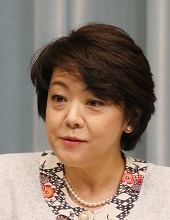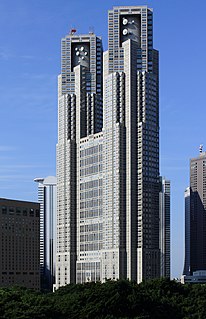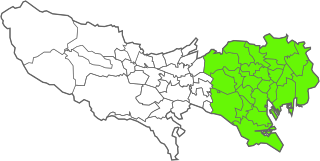Elections on April 22
- By-elections for the national Diet: House of Councillors, Fukushima and Okinawa
- Mayoral elections in 96 cities, 13 special wards and many towns and villages
- Assembly elections in hundreds of municipalities, including 21 special wards
The Okinawa at-large district is a constituency of the House of Councillors in the Diet of Japan. It consists of the entire prefecture of Okinawa and was created in 1970 following the agreement between US president Richard Nixon and prime minister Eisaku Satō on restoration of Japanese sovereignty over the Ryūkyū islands. Okinawa is represented by two Councillors electing one every three years.
Elections with national media coverage included the mayoral races in five prefectural capitals (Mito, Ibaraki; Takamatsu, Kagawa; Matsuyama, Ehima; Nagasaki, Nagasaki: Tomihisa Taue won the election to succeed assassinated mayor Itchō Itō; Ōita, Ōita), in the bankrupt city of Yūbari, Hokkaidō, and in Tōyō, Kōchi where an opponent of a planned site for highly radioactive waste won the election.
The House of Councillors by-elections were won by one LDP-Kōmeitō supported candidate (Aiko Shimajiri in Okinawa) as replacement for OSMP Councillor Keiko Itokazu, and one Democrat (Teruhiko Mashiko in Fukushima) as replacement for Democrat Yūhei Satō, producing a net gain of one seat for the ruling centre-right coalition three months before the regular House of Councillors election of 2007.

Aiko Shimajiri is a Japanese politician, a Liberal Democrat member of the House of Councillors in the Diet who was elected for the first time in 2007 and re-elected in 2010 in Okinawa Prefecture constituency. Shimajiri was appointed the Minister of State for Okinawa and Northern Territories Affairs in the cabinet reshuffle on October 7, 2015, and is one of 3 women serving in Shinzo Abe's cabinet.
Keiko Itokazu is a Japanese politician, an independent and member of the House of Councillors in the Diet. A native of Yomitan, Okinawa and high school graduate, she served in the assembly of Okinawa Prefecture for three terms, starting in 1992, and was elected to the House of Councillors for the first time in 2004. After running unsuccessfully for governorship of Okinawa Prefecture in 2006, she was re-elected to the House of Councillors in 2007.

Teruhiko Mashiko is a Japanese politician of the Democratic Party of Japan, a member of the House of Councillors in the Diet.
The Japanese political process has three types of elections: general elections to the House of Representatives held every four years, elections to the House of Councillors held every three years to choose one-half of its members, and local elections held every four years for offices in prefectures, cities, and villages. Elections are supervised by election committees at each administrative level under the general direction of the Central Election Administration Committee, an attached organization to the Ministry of Internal Affairs and Communications (MIC). The minimum voting age in Japan's non-compulsory electoral system was reduced from twenty to eighteen years in June 2016. Voters must satisfy a three-month residency requirement before being allowed to cast a ballot.
This page lists Japan-related articles with romanized titles beginning with the letter O. For names of people, please list by surname. Please also ignore particles when listing articles.

The Tokyo Metropolitan Government is the government of the Tokyo Metropolis, one of the 47 prefectures of Japan. The government consists of a popularly elected governor and assembly. The headquarters building is located in the ward of Shinjuku. The metropolitan government administers the 23 Special Wards of Tokyo, as well as the other cities and towns that constitute the prefecture. With a population closing in on 14 million living within its boundaries, and many more commuting from neighbouring prefectures, the metropolitan government wields significant political power within Japan.

Elections for the Japanese House of Councillors were held in Japan on 29 July 2001. It was the first national election since Junichiro Koizumi was appointed as prime minister after Yoshiro Mori resigned in April 2001. The Liberal Democratic Party (LDP) and its election allies, were the major winner, provided Koizumi a strong mandates to move forward with his reform policies. The ruling coalition performed well, and regain their majority in the House of Councillors.
Hiroko Nakano is a Japanese politician serving in the House of Representatives in the Diet as a member of the Democratic Party of Japan. A native of Mutsu, Aomori and graduate of Hirosaki Gakuin University she ran for the Diet for the first time in 2000 after serving three terms in the city assembly of Nemuro, Hokkaido since 1989. In her second attempt, she won a seat in the House of Representatives in the 2003 general election.
Yukiko Sakamoto is a Japanese politician and bureaucrat from Mishima, Shizuoka. She was the first woman to be appointed vice-governor of Shizuoka Prefecture in 1996 and served one term in the House of Councillors in the National Diet from 2004 until 2009.
Events in the year 2009 in Japan.
Events in the year 2010 in Japan.

The 11th Okinawa gubernatorial election was held on November 28, 2010. The official campaign start began November 11. The 2010 election garnered national attention mostly for the dispute between the central government and local communities in Okinawa over the planned relocation of Marine Corps Air Station Futenma from Ginowan to Henoko in Nago that had also contributed to the resignation of prime minister Yukio Hatoyama in June 2010.
The 17th unified local elections in Japan took place in April 2011. In the first phase on April 10, 2011 12 governors, 41 prefectural assemblies as well as five mayors and 15 assemblies in cities designated by government ordinance were elected. In the second phase on April 24, 2011 mayors and/or assemblies in hundreds of cities, cities of Tokyo, towns and villages were up for election. Additionally, a by-election for the National Diet was held in Aichi on April 24.
Events in the year 2012 in Japan.
Politics of Nagasaki, as in all prefectures of Japan, takes place in the framework of local autonomy that is guaranteed by the Constitution and laid out in the Local Autonomy Law. The administration is headed by a governor directly elected by the people every four years in first-past-the-post elections. Legislation, the budget and the approval of personnel appointments, including the vice governor, are handled by the prefectural assembly that is directly elected by the people every four years by single-non transferable vote.

The 23rd Elections to the House of Councillors for the upper house of the National Diet, the legislature of Japan, was held on July 21, 2013. In the last election in 2010, the Democratic Party of Japan (DPJ) remained the largest party, but the DPJ-led ruling coalition lost its majority. The House of Councillors is elected by halves to six year terms. In 2013, the class of Councillors elected in 2007 was up.
The first stage of the 18th unified local elections in Japan took place on April 12, 2015. The Liberal Democratic Party under leadership of Shinzo Abe was the overall victor, winning many races including all ten gubernatorial races and 1,153 of the 2,284 assembly seats at stake. Further elections for municipal mayors and assemblies took place on April 26.

The 24th regular election of members of the House of Councillors was held on Sunday 10 July 2016 to elect 121 of the 242 members of the House of Councillors, the upper house of the 717-member bicameral National Diet of Japan, for a term of six years. As a result of the election, the LDP/Komeito coalition gained ten seats for a total of 146, the largest coalition achieved since the size of the house was set at 242 seats.
The following lists events that happened during 2016 in Japan.
The Hyogo at-large district is a constituency that represents Hyogo Prefecture in the House of Councillors in the Diet of Japan. It currently has five Councillors in the 242-member house, but this representation will increase to six by July 2019.
The Democratic Party , abbreviated as DP, was a political party in Japan. It was the largest opposition political party in Japan from 2016 until its marginalization in the House of Representatives in 2017. The party was founded on 27 March 2016 from the merger of the Democratic Party of Japan and the Japan Innovation Party. The majority of the party split on 28 September 2017, before the 2017 general election, with many its members contesting the election as candidates for the Party of Hope, Constitutional Democratic Party of Japan or as party members without nomination. On 7 May 2018 the DP merged with the Party of Hope to form the Democratic Party for the People.

Okinawa 1st district is a constituency of the House of Representatives in the Diet of Japan. It is located in Okinawa Prefecture and encompasses the city of Naha and parts of Shimajiri District. As of 2016, 270,872 eligible voters were registered in the district.













